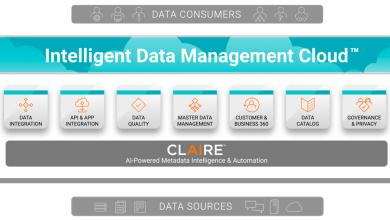
Attributed to: Remus Lim, Vice President, Asia Pacific & Japan, Cloudera
 As cities grow rapidly, so do their infrastructure development needs. New trends in urbanization, population growth, and economic development are putting pressure on governments to maintain and update municipal infrastructure, especially transport.
As cities grow rapidly, so do their infrastructure development needs. New trends in urbanization, population growth, and economic development are putting pressure on governments to maintain and update municipal infrastructure, especially transport.
Furthermore, as the call to mitigate climate risk becomes more urgent, governments should prioritize the development of infrastructure projects that support a transition to low-emission economies, and foster collaboration between private sector and academic partners to accelerate climate-resilient growth.
Digitization and technology can help hasten the construction of these infrastructure projects, while enhancing operating efficiencies, their resilience, and adaptability. From smart street lighting that optimizes energy use, to networks of sensors that enable authorities to monitor traffic and public transport conditions – technology is being increasingly used by governments across Asia Pacific (APAC) to enhance infrastructure.
While these steps to improve infrastructure are commendable, more can be done to accelerate APAC’s progress towards meeting the United Nations’ Sustainable Development Goals of reduced carbon emissions by 2030. World Environment Day on 5 June is a timely reminder that we still have quite a way to go on our journey to net-zero emissions.
The transport sector, one of the biggest contributors to carbon emissions, represents the largest and most immediate opportunity for governments across APAC to tackle. Many of the region’s cities suffer from very high air pollution, with as much as 80% attributable to transport according to the Asian Development Bank.
Pivoting to more sustainable and efficient transportation holds the key to addressing emissions. However, it takes more than a simple shift to electric vehicles – driving sustainability across the transportation sector requires well-informed policies backed by targets and data.
Driving better policy making with data
Governments need insights on current transport and environmental trends to develop effective policies – which is why data is such an essential resource today. The ability to collect, manage, and analyze data in real-time can help governments accelerate the move to sustainable transportation and respond more proactively to issues.
Identifying the right metrics and data sources for analysis can help governments obtain deeper, actionable intelligence on the transport sector’s impact to the environment – like revealing the biggest sources of emissions, or areas in the country which need upgrades to their transport infrastructure.
This knowledge also supports governments in informed decision-making when planning new policies and solutions to address issues, or how to prioritize resources to drive change.
One such government agency using data in this way is The Chinese Research Academy of Environmental Sciences (CRAES) – the body responsible for vehicle environmental management in China, including emission monitoring technology and policy support.
In 2018, CRAES needed to support the rollout of a new China VI emission standard for new heavy-duty vehicles (HDVs), which required particulate filters and remote emission monitoring on-board terminals on all new diesel HDVs by 2021. However, this required CRAES to work with bigger data sets – an increase in the scale of terabytes to petabytes – in real time.
CRAES’s legacy platform could not scale to this new requirement, which resulted in higher costs and operational inefficiencies. To solve this, CRAES worked with a private sector partner to build a new hybrid data platform which enabled it to store, manage, and analyze petabytes of this heavy-duty vehicle emissions data in real-time.
Ultimately, this led to more informed carbon reduction policy recommendations. In the future, CRAES plans to analyze emissions data from new classes of machinery to further aid policymaking and to better meet sustainability goals.
Achieving success with real-time data requires planning ahead
Collecting and using data in real-time at scale is no easy feat. While many governments across APAC are already collecting data in some form, they often face challenges in the aggregation, integration, and analysis of it.
Many struggle with making sense of the data at scale. To get a holistic understanding of progress of sustainability in transport, governments need to integrate petabytes worth of unstructured and structured data – from vehicular emissions to real-time traffic data – into a single source of truth.
Data is often siloed across numerous cloud and on-premises environments and owned by different organizations. Getting them to openly share data in a consistent and secure way can be a challenge.
Many existing traditional IT infrastructures are also typically ill-equipped to handle the management and analysis of such huge amounts of data.
Without the deployment of modern data architectures, like data mesh, data fabric, and data lakehouse, analyzing this sea of transport and sustainability data requires enormous compute resources and time – taking days or more to complete. This hinders companies from analyzing data in real-time, and often results in overrunning budgets and outdated intelligence.
Governments can overcome these common challenges by:
- Building a strong, centralized foundation of robust data strategies that facilitate effective collection and analysis of data at scale
- Using modern data technologies, like cloud agnostic, hybrid data platforms to facilitate the universal, free flow of information throughout the entire data lifecycle while keeping data secure across environments
- Deploying data platforms that support the entire streaming data journey, and can collect, distribute, transform, process and analyse data from end to end – or in between. Organizations that can integrate and utilise all their structured and unstructured data across various sources and destinations will speed up time to insight.
- Building extensive public-private partnerships to overcome data silos, encourage open data sharing, and drive innovative use cases for sustainable transport with data
- Enforcing good data governance practices so that data collected is clean, anonymized, compliant, and ready for analysis – and to ensure that there are security and governance controls in place that grant the appropriate levels of access to users and collaborators inside and outside government
Governments are in the driver’s seat on the road to sustainability
There is a long way to go in the move to sustainable infrastructure, but governments can take a good first step by using data to enhance sustainability in the transport sector.
The United Nations Economic and Social Commission for Asia and the Pacific states that sustainable transportation has the potential to save hundreds of thousands of lives every year, deliver savings of $70 trillion by 2050 through improved road safety, and reduce carbon emissions by the equivalent of several billion tons.
Leveraging real-time data, predictive analytics and tools like artificial intelligence can help governments accelerate this transition and amplify the impact of sustainable policies.
However, governments need to remember that working with all these technologies requires a strong data foundation. Insights are only as good as the data used, and only with good insights can governments develop policies that put society on the road to a sustainable future.




